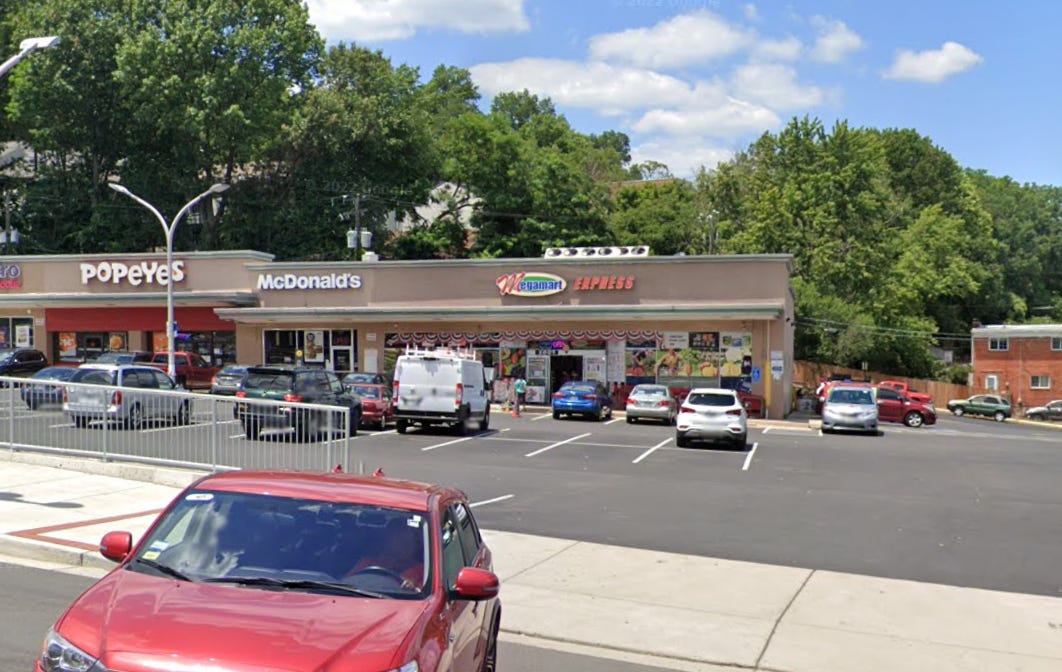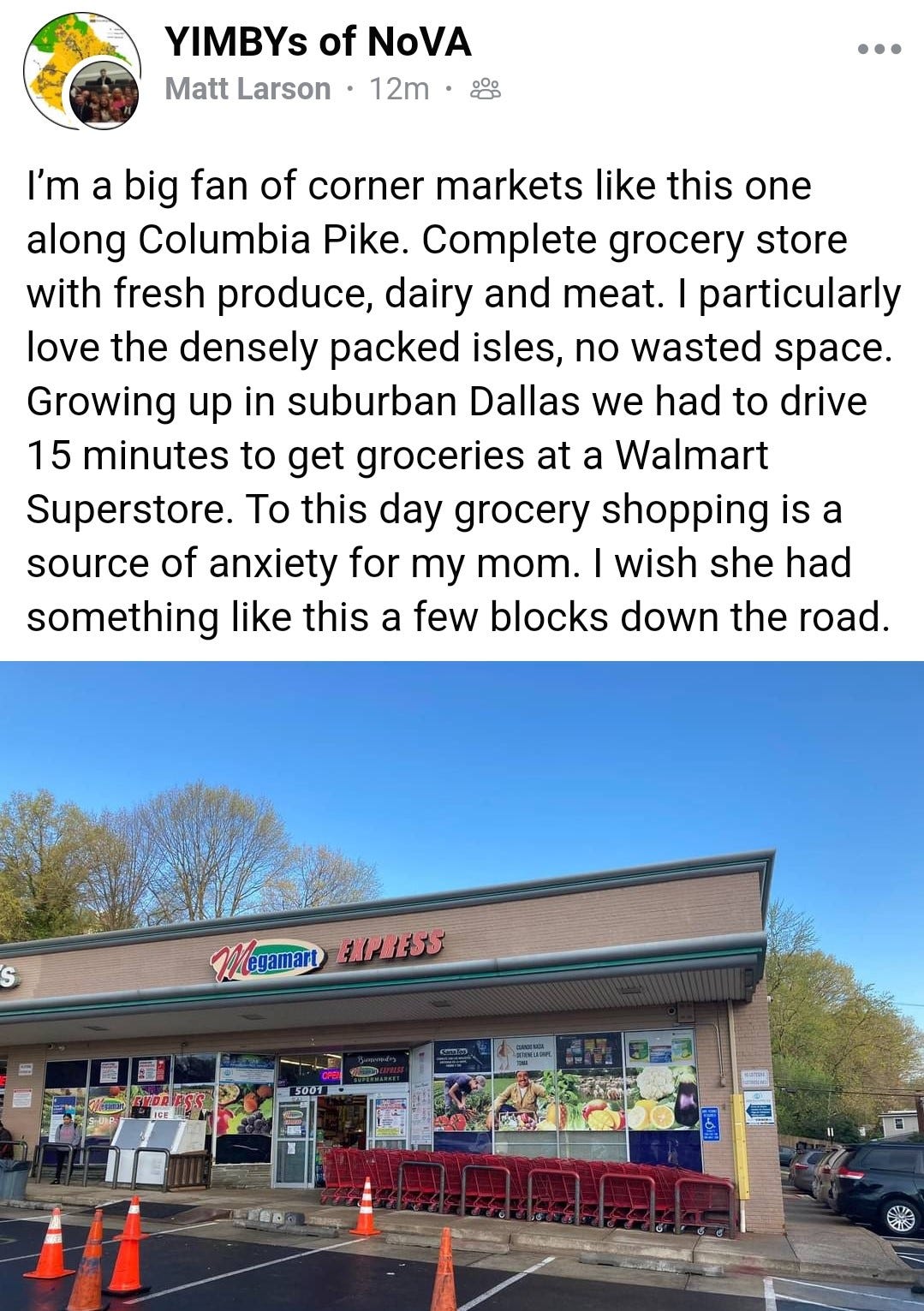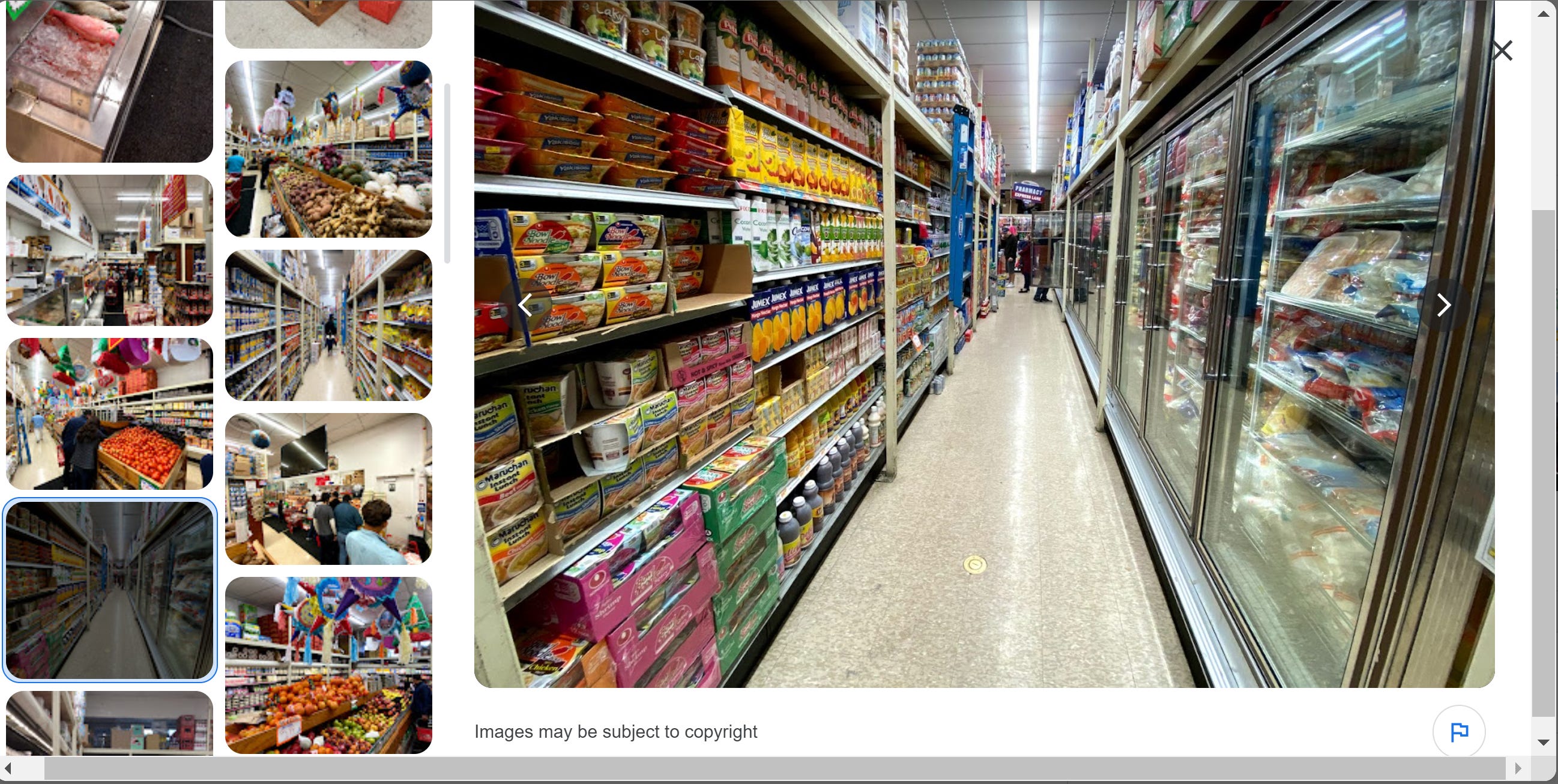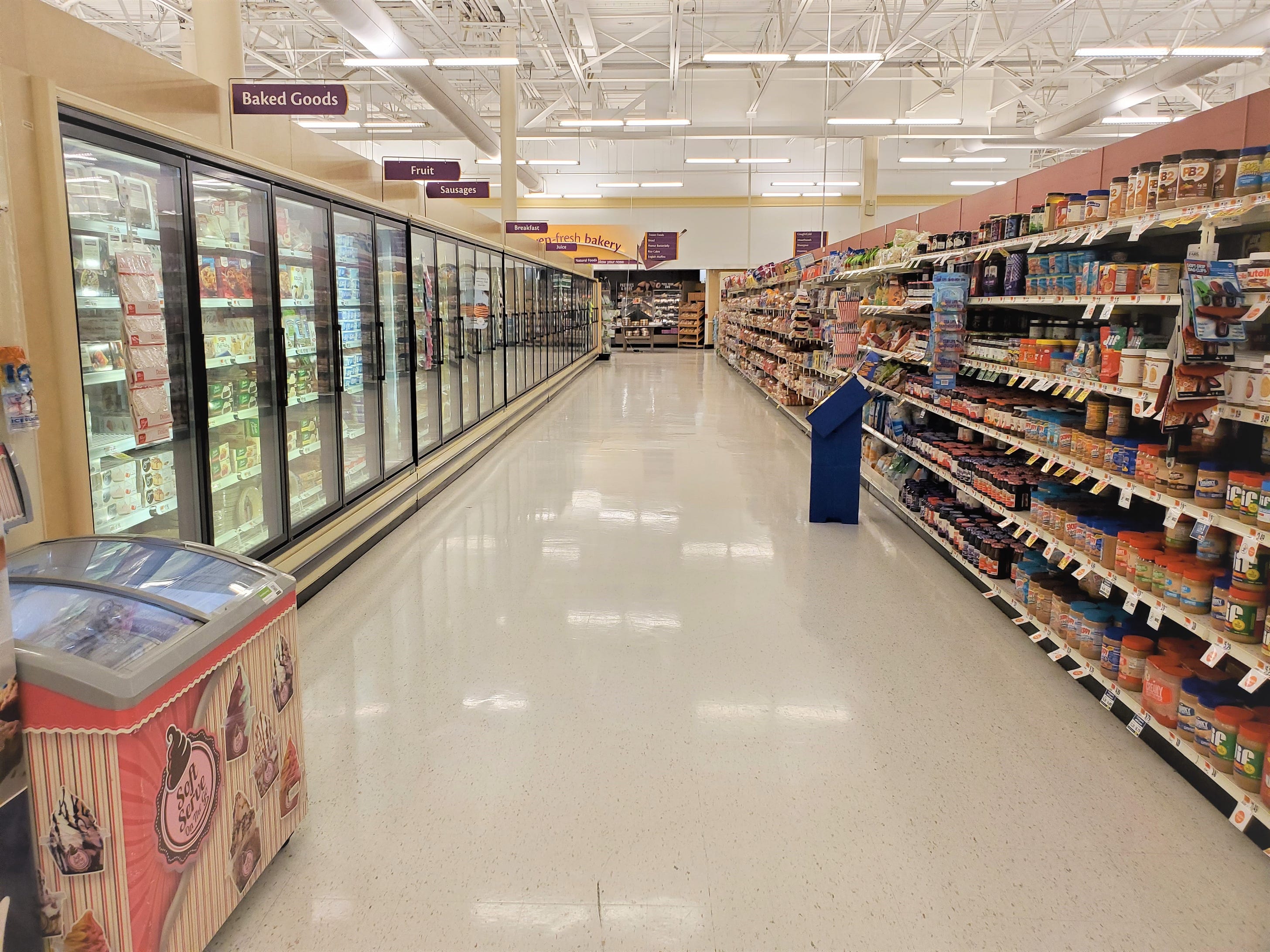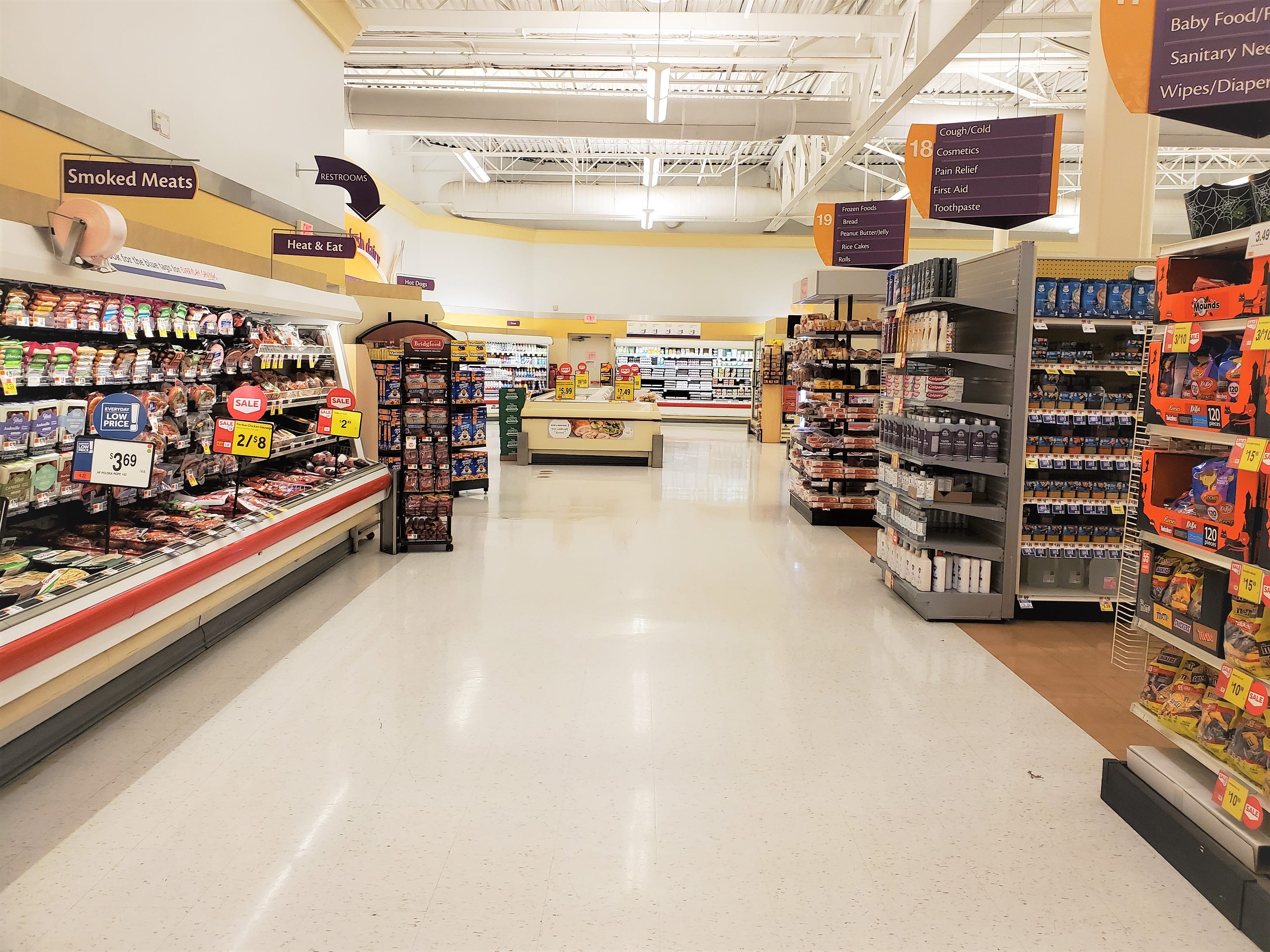The Neighborhood Supermarket Never Disappeared
The Neighborhood Supermarket Never DisappearedThe less visible perseverance of a once-universal retail formI was in Discourse Magazine last week with a piece on neighborhood supermarkets: small but modern supermarkets, 8,000-12,000 square feet, often in town or city locations. These were common in small towns and city neighborhoods up until the 1970s, roughly—some were still opening in the 1960s. Basically, at one time, they were simply supermarkets. But the combination of cheap land and a desire for less cramped locations, and larger parking lots and physical stores, led a lot of these stores to close or migrate from urban settings to suburban, car-oriented ones. Here was one of the neighborhood supermarkets in my hometown of Flemington, New Jersey. Today, the mainstream American grocery chains have pretty much abandoned this retail format. My town actually would like a supermarket on Main Street, possibly in the very space that was once the old supermarket. The problem is, very few chains actually operate at that scale, and so this local land-use/retail desire no longer lines up with the way the industry does business. This a problem both for small towns and neighborhoods, and for actual or potential mixed-use developments in the suburbs:
This is an important point: recreating old-fashioned urbanism is not possible through land use alone. It also requires commerce scaled to Main Street—not boutiques, but real, boring, everyday retail. This is one of the more subtle things that the suburban revolution has made more difficult. But. It is true that supermarket chains have mostly moved away from this small urban format to a big-box suburban format. It’s also true that the German imports, Aldi and Lidl, have revived something like the small-format supermarket, though they are generally in suburban locations as well. But that isn’t the whole story. Awhile back, I saw a neat post at the Northern Virginia YIMBY group’s Facebook page, highlighting a small-format Latino grocery store in Arlington called Megamart Express (Megamart is a supermarket chain whose stores are mostly larger). Here it is: This is very small—under 6,000 square feet. Here’s the Facebook post about it: He’s not kidding about the aisles: here’s a screenshot of the Google photos for this store: That’s a really interesting contrast to these aisles in a late 1990s/early 2000s typical big-box supermarket where I grew up, outside Flemington. Look at this: This is subtle but very deep. What it means is that, say, a doubling of the sales floor doesn’t entail a doubling of the inventory. Small stores pack tightly; big stores luxuriate in all that space. More space has diminishing returns. This is about scale, which is a key element of urbanism. As with cars, as with houses, as with streets, we see an increase in scale and a decrease in the efficiency of the use of space. In a lot of ways, that’s the underlying sociological and economic truth that suburban land use represents. I once saw a fascinating thread comparing a Walmart to a suburb, with the shopping carts and wide aisles as cars and “stroads,” and a Trader Joe’s as a small town, with the narrower, densely packed aisles as streets and the baskets and smaller carts as bikes or small cars. I think about that a lot—how our perception of space and our expectations of room/privacy/crowding have changed over the decades. There are any number of small immigrant-owned and patronized food stores—some like this, with a complete set of modern supermarket departments, others lacking fresh meat or fish but having frozen food, some having packaged groceries only with maybe a small freezer and a hot bar of prepared food. And also many single-category stores:
In the piece, I talk about how a lot of white Americans basically don’t see any of this, or think it’s kind of weird or “foreign,” because nowadays most grocery retailing in this format does seem to be “ethnic” and catered toward immigrant communities. But here’s the key:
One reason we don’t “see” them is because not every metro area has the diversity or the density to support these stores. In their absence, food shopping defaults to big-box chains for the most part. Another reason is simply that the foods they sell are not your mainstream “American” groceries, ingredients, and household supplies. Yet another reason is that these stores often have minimal reviews or photos online—I assume their customers aren’t the very-online detailed reviewing type—and so it’s hard to actually figure out exactly what’s for sale, or how good the store is. In that vein, a little more on the Megamart. One Yelp review says:
Sure enough, there are only a handful of Yelp reviews and photos. Nowadays an online-review presence is an important way of knowing a place exists. The fact that these stores are patronized by people who mostly don’t use Yelp—working-class Latinos, probably, in this case—makes them less visible to middle- and upper-middle-class people. (There are a lot more Google reviews and photos, which calls to mind a piece I wrote about how you can predict a community’s affluence based on the ratio of Yelp to Google reviews for its businesses. I’d like to revisit this idea.) But the point is that because these stores exist, even in the suburbs, they can exist. Suburbia doesn’t truly force commerce at a larger scale, even though it generally has done so. It is a choice by the supermarket chains to abandon smaller stores for much larger ones with larger trade areas and greater distances between them. And they could, if they wanted, make the choice to reintroduce the sort of stores they once built everywhere, sized properly for housing developments or Main Streets, and capable of generating a profit off a smaller and more local customer base. And we could really use those. Related Reading: Secondhand Supermarkets, Part II Thank you for reading! Please consider upgrading to a paid subscription to help support this newsletter. You’ll get a weekly subscribers-only piece, plus full access to the archive: over 900 pieces and growing. And you’ll help ensure more like this! You're currently a free subscriber to The Deleted Scenes. For the full experience, upgrade your subscription. |
Older messages
A Gremlin and a Plumb Job
Monday, February 12, 2024
The spooky, satisfying fun of being a house doctor
Are We Seeing The Same Thing?
Saturday, February 10, 2024
Urbanism is ninety percent mental. The other half is land use.
New and Old #148
Friday, February 9, 2024
Friday roundup and commentary
What About "15-Minute Suburbs"?
Thursday, February 8, 2024
And introducing a new publication I'm a part of!
The Little Changes Over Time
Wednesday, February 7, 2024
What Do You Think You're Looking At? #149
You Might Also Like
Red Hot And Red
Tuesday, March 4, 2025
What Do You Think You're Looking At? #204 ͏ ͏ ͏ ͏ ͏ ͏ ͏ ͏ ͏ ͏ ͏ ͏ ͏ ͏ ͏ ͏ ͏ ͏ ͏ ͏ ͏ ͏ ͏ ͏ ͏ ͏ ͏ ͏ ͏ ͏ ͏ ͏ ͏ ͏ ͏ ͏ ͏ ͏ ͏ ͏ ͏ ͏ ͏ ͏ ͏ ͏ ͏ ͏ ͏ ͏ ͏ ͏ ͏ ͏ ͏ ͏ ͏ ͏ ͏ ͏ ͏ ͏ ͏ ͏ ͏ ͏ ͏ ͏ ͏ ͏ ͏ ͏ ͏ ͏ ͏ ͏ ͏ ͏
What to Watch For in Trump's Abnormal, Authoritarian Address to Congress
Tuesday, March 4, 2025
Trump gives the speech amidst mounting political challenges and sinking poll numbers ͏ ͏ ͏ ͏ ͏ ͏ ͏ ͏ ͏ ͏ ͏ ͏ ͏ ͏ ͏ ͏ ͏ ͏ ͏ ͏ ͏ ͏ ͏ ͏ ͏ ͏ ͏ ͏ ͏ ͏ ͏ ͏ ͏ ͏ ͏ ͏ ͏ ͏ ͏ ͏ ͏ ͏ ͏ ͏ ͏ ͏ ͏ ͏ ͏ ͏ ͏ ͏ ͏ ͏ ͏ ͏ ͏ ͏
“Becoming a Poet,” by Susan Browne
Tuesday, March 4, 2025
I was five, / lying facedown on my bed ͏ ͏ ͏ ͏ ͏ ͏ ͏ ͏ ͏ ͏ ͏ ͏ ͏ ͏ ͏ ͏ ͏ ͏ ͏ ͏ ͏ ͏ ͏ ͏ ͏ ͏ ͏ ͏ ͏ ͏ ͏ ͏ ͏ ͏ ͏ ͏ ͏ ͏ ͏ ͏ ͏
Pass the fries
Tuesday, March 4, 2025
— Check out what we Skimm'd for you today March 4, 2025 Subscribe Read in browser But first: what our editors were obsessed with in February Update location or View forecast Quote of the Day "
Kendall Jenner's Sheer Oscars After-Party Gown Stole The Night
Tuesday, March 4, 2025
A perfect risqué fashion moment. The Zoe Report Daily The Zoe Report 3.3.2025 Now that award show season has come to an end, it's time to look back at the red carpet trends, especially from last
The FDA Just Issued a Recall on a Supplement — Because it Contains an ED Drug
Monday, March 3, 2025
View in Browser Men's Health SHOP MVP EXCLUSIVES SUBSCRIBE The FDA Just Issued a Recall on a Supplement — Because It Contains an ED Drug The FDA Just Issued a Recall on a Supplement — Because It
10 Ways You're Damaging Your House Without Realizing It
Monday, March 3, 2025
Lenovo Is Showing off Quirky Laptop Prototypes. Don't cause trouble for yourself. Not displaying correctly? View this newsletter online. TODAY'S FEATURED STORY 10 Ways You're Damaging Your
There Is Only One Aimee Lou Wood
Monday, March 3, 2025
Today in style, self, culture, and power. The Cut March 3, 2025 ENCOUNTER There Is Only One Aimee Lou Wood A Sex Education fan favorite, she's now breaking into Hollywood on The White Lotus. Get
Kylie's Bedazzled Bra, Doja Cat's Diamond Naked Dress, & Other Oscars Looks
Monday, March 3, 2025
Plus, meet the women choosing petty revenge, your daily horoscope, and more. Mar. 3, 2025 Bustle Daily Rise Above? These Proudly Petty Women Would Rather Fight Back PAYBACK Rise Above? These Proudly
The World’s 50 Best Restaurants is launching a new list
Monday, March 3, 2025
A gunman opened fire into an NYC bar
